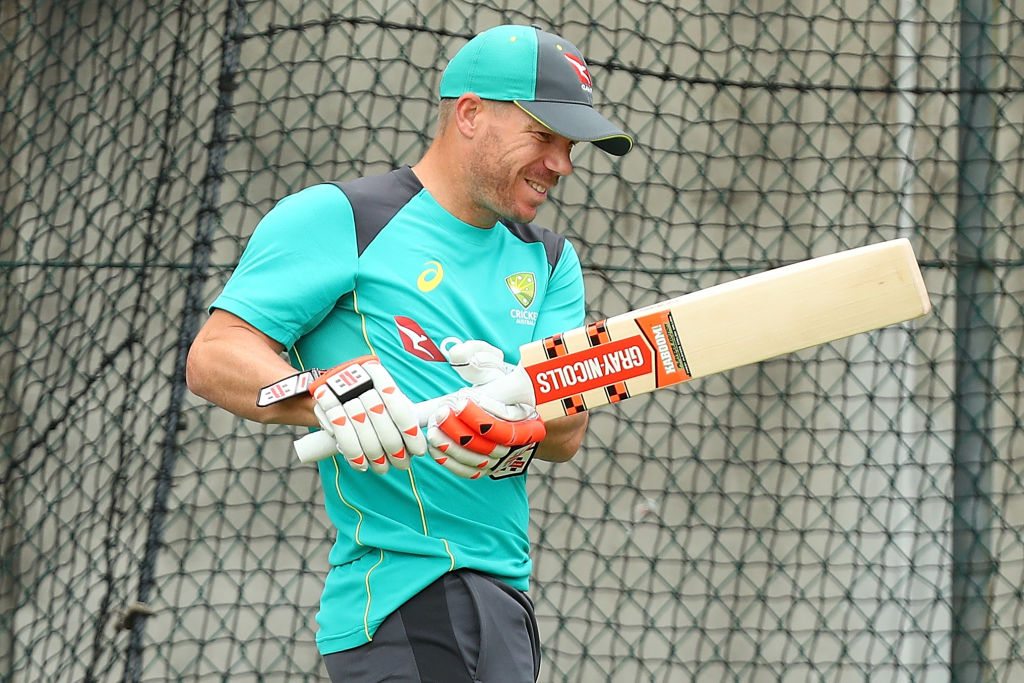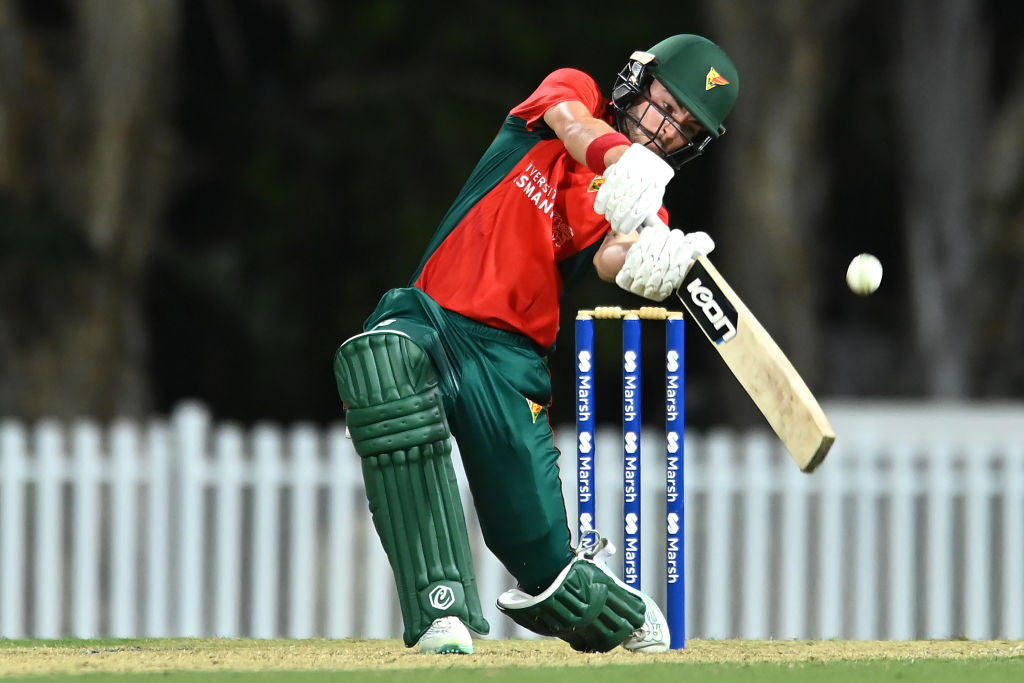Australian veteran opening batsman David Warner has already hinted at a possible retirement from Test cricket in the next 12 months, but the decision may be taken out of his hands without a drastic turnaround in form.
While the 36-year-old managed an 86 and 106 during Australia's three-match ODI series against England last week, his lack of preparation for red-ball cricket was found out again on Wednesday in Perth, as he fell for five to the bowling of Jayden Seales.
The shot that Warner got out to was worse than the score, with no footwork and the bat being trapped a long way away from the body before he chopped on.
While runs against the white ball are one thing, Warner needed a huge summer to knock the doubters off ahead of what will be a grinding away campaign for Australia, with a four-Test tour to India for the Border-Gavaskar Trophy to be quickly followed by a possible World Test Championship final and the Ashes, presenting a possible six-Test campaign in England.
It's then that Warner says he would consider retiring from the longest form of the game to increase his career timeline in the ODI and T20I formats, but unless he finishes this summer with runs by the truckload, it's going to be difficult to justify his position on those two tours, particularly if other batsmen continue to fire at Sheffield Shield level.
And if that's the case, then the last thing Australia wants to be doing is handing out Test debuts to players in India, followed by England.
A chance to adapt to Test cricket at home against South Africa in a three-Test series to conclude the home summer before heading to the sub-continent is the far better solution in this instance.
But that requires making an incredibly difficult call on Warner.
He might be a polarising figure, but there is no doubt about the difference Warner has made throughout his Test career, turning into one of the greatest openers the nation has ever had walk onto a field.
7817 runs at 46.52, despite a lean last 8 Tests and a 12-month ban from playing thrown in, shows exactly how good he has been across his 96 Tests. It's not only the raw numbers, Warner has revolutionised Test match batting in many ways with his aggressive style, notching up 24 centuries and a highest score of 335 not out.
That all said, it's a style that has often landed him in trouble overseas, particularly on the sub-continent, where a majority of Australian batsmen have struggled, and in England against the swinging ball.
While Warner averages a tick under 60 in Australia, he has only scored 651 runs at 26.04 from 13 Tests in England, and 388 runs at 24.25 from 8 Tests in India. He averages only 25.22 in Sri Lanka, although his averages in Bangladesh, Pakistan and the United Arab Emirates from limited matches are better.
For a player seen to be excellent against spin, his numbers on the sub-continent are worrying, as is the fact that after this home summer, the next ten Tests are either in India or England.
Then you come back to his current form.
The powerhouse opener has only made two half-centuries in his last 16 Test match innings. That is a run of poor form that stretches all the way back to the middle of the 2021-22 summer. Since then, his only half-centuries came in Rawalpindi and Galle, with one in Pakistan and one in Sri Lanka.
He has failed in Adelaide, Melbourne, Sydney, Hobart, Karachi, Lahore and Galle (Australia played both Tests in the city), before his score of five in Perth yesterday.
Granted, many of those venues are on the sub-continent, but Warner's last 16 Test innings have brought just 322 runs at an average of 20.125.
While subscribing to the theory of credits in the bank, even they expire at some point, and for Warner, they must be getting close to doing so, particularly after a T20 World Cup campaign that failed to set the world on fire with only two scores in double digits.
Failing in T20 cricket where it's hell for leather from Ball 1 is excusable, but it does add to the narrative that Warner is simply not in any sort of form to continue banking on his existence in the Test team that is preparing for some of the toughest tasks it will face.
Adding to the dilemma for Australian selectors is the fact there is going to be a mass upheaval to the team coming in the next few years.
Warner might be 36, but he is closely followed in the batting order by Usman Khawaja (35) and Steve Smith (33), while Travis Head and Marnus Labuschagne are both 28 and have longer up their sleeves.
That said, the last thing Australia will want is a number of players retiring at the same time - and that could be after next year's Ashes.
So, with the idea of avoiding a mass retirement party (we all saw what happened when Shane Warne, Justin Langer and Glenn McGrath called it quits), as well as avoiding throwing a young gun like Henry Hunt to the wolves on the sub-continent, Warner needs runs and he needs them in a hurry to avoid being the obvious early replacement.
South Australian young gun Henry Hunt is clearly Australia's next long-term opener. He scored 601 runs at 42.92 last Sheffield Shield season and has already cracked another 274 this season, although has been unlucky.
Tim Ward is another who had an excellent season last year and is already up to 389 runs at 48.62 this year with four half-centuries in nine digs.
Western Australian captain Sam Whiteman is also banging down the door, with 641 runs last year backed up by 345 already this year.
Caleb Jewell has continued his impressive form as well, adding a fourth player in contention for the spots of Warner and Khawaja when they do hang up the boots.
The options are certainly there, but the last thing Cricket Australia wants to do is burn one on debut in the sub-continent - a tough task for the experienced veterans, let alone the debutants.
Warner can save his career, but he is running out of chances with the writing now starting to be scrawled on the wall.










